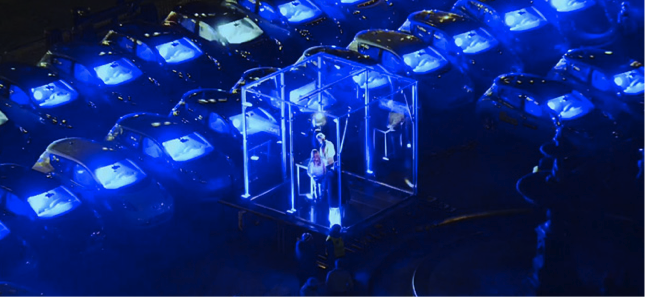It’s no longer good enough to hunker down with sand bags, hoping to stem the tide. Or to deck the house out with a year’s worth of IKEA candles in preparation for power cuts. As the rain here in the UK begins to retreat for the first time in eight weeks, it’s time to put away our Canute-like pretentions and think seriously about finding smarter, more creative ways to protect our neighborhoods from the increasingly frequent dangers of climate change.
We need to find systemic solutions because, quite frankly, the perennial clear up costs are unsustainable. The good news is that, as ever, necessity is the mother of invention. Forward-thinking governments and city leaders are partnering with bright entrepreneurs to come up with some clever ideas. Bringing real vision and ingenuity to our doorsteps.

The low carbon industrial revolution
Half of the world’s population lives in cities, yet cities are responsible for 75% of the world’s carbon emissions. This is why the more enlightened of city leaders are setting up ‘future city’ initiatives to create better urban spaces for us to live and work in.
Staying ahead of the curve will be crucial, as will be a deeper understanding of their citizens’ attitudes, so that win-win ideas are prioritised. Interestingly, Zipcar in the US has been tracking millennials’ view on the automobile. Their findings suggest the car is no longer the ‘American dream’ it once was. Now, it’s cool to bike.
So how can the city take advantage of shifts in behaviour like this? A great example is the Copenhagen Wheel, developed by tech savvy futurists MIT’s SENSEable City Laboratory and the then Lord Mayor of Copenhagen, Ritt Bjerregaard. This extraordinary innovation combines sophisticated and compact motor design elements with seamless, modern smart phone integration. Together, MIT and Copenhagen have invented bike 2.0, turning the standard peddle-pusher into a smart electric hybrid of the future.
What is truly amazing about this wheel is that it not only makes cycling easier; it also allows you to tap into the Networked Society. Built in are a number of sensors that directly communicate with your smartphone via Bluetooth. This means you can track miles, calories, temperature, humidity changes and even environmental pollution while riding your bike.
Even better, you can then compare with friends through online social networks. And then go a step further and share your data, anonymously, with your city. This in turn provides the city with more detailed granular environmental information, enabling them to build a deeper understanding of the impact of transportation.
Ultimately, this type of crowdsourcing can influence how your city allocates its resources, how it responds to environmental conditions in real-time or how it structures and implements environmental and transportation policies. By reinventing the wheel, this innovative partnership has the potential to reinvent the city.
The automobile industry is fighting back, though, with its own innovative thinking. Take Nissan with its future:today programme. It celebrates the Nissan LEAF as more than an electric car – more than a vehicle with zero emissions and no tailpipe. It’s a car you can warm up or cool down remotely from your phone. A car you can even use to power your home. (Well, if your home happens to be in Japan.) Nevertheless, still pretty useful in a power cut.
As part of the campaign, Nissan created the world’s biggest electric organ using 50 LEAF cars. Each car had multiple lights, which were controlled by music that LEAF owners created in real-time with a touch-based app. The idea being a mash-up of Close Encounters meets Daft Punk. Though perhaps not the best way to demonstrate your eco creds…

Dream me. Build me. Make me real
Perhaps it’s fitting to leave the ultimate future city to TED. Their City 2.0 website acts a platform to uncover stories and collective actions taken by citizens around the world, all with the aim of making their neighbourhoods better and more progressive places to live.
The City 2.0 mantra inspires you to forge a new urban outlook. To combine the reach of the cloud with the power of the crowd. To connect leaders, experts, companies, organisations and citizens. To share tools, data, designs, successes, and ideas. And to turn them into action. See the YouTube video below and get involved. The future of your neighbourhood depends on it.
About the Author

Greg Taylor became founding partner in global brand design consultancy Elmwood in 1989. Now Director of Brand Provocation, Greg is the creator and facilitator of Step Change™, Elmwood’s strategic tool for moving ideas forward. Clients include ASDA, Wal-Mart, Arla Foods, BBC, COI (Defra and DfT), Cable&Wireless, Comic Relief, Debbie & Andrew’s, Durex, Glasgow 2014 Commonwealth Games, McCain, and the Met Office.